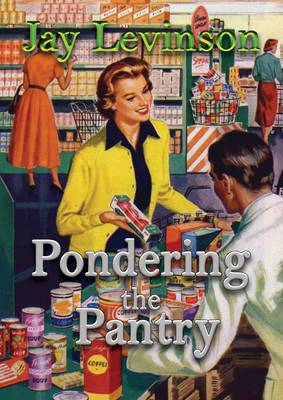
- Retrait gratuit dans votre magasin Club
- 7.000.000 titres dans notre catalogue
- Payer en toute sécurité
- Toujours un magasin près de chez vous
- Retrait gratuit dans votre magasin Club
- 7.000.000 titres dans notre catalogue
- Payer en toute sécurité
- Toujours un magasin près de chez vous
Description
Pondering the Pantry by Jay Levinson
When shopping for food, know what you are buying.
Don't be fooled! Don't buy what you don't need.
This book does not pretend to cover all products. There are too many items on food store shelves to try to be "complete." Rather, the idea is to provide representative product samples to increase awareness and give consumers a better idea of what they are buying and its benefits.
There is no such thing as "best buy." Some shoppers look for quality. Others are motivated by nutrition. Price can be a very strong consideration, but not for everyone. The basic philosophy of this book is not to push consumers into any specific direction. Rather, the intent is to make consumers aware of what they are buying, so they can choose a healthier diet.
There are, however, two rules that apply to all consumers:
(1) understand the label (what is written and what is not), and
(2) realize that "portion" is not what is written on the label, but what you really eat (so adjust the cost and nutrition accordingly).
Many of the foods that we eat have been known from ancient times. Others found new markets during the Age of Discovery, as geographic borders began to collapse, and many fruits and vegetables became internationally known rather than merely regional. The Industrial Revolution is known for many things, but amongst them are the machines and resultant manufacturing techniques that made possible many of the processed foods that we eat. The need to feed large armies in World War II hastened the development of some packaged foods, but the marketing of other items had to be postponed until after the war was over. Towards the end of the 20th century another development took place, as many smaller companies were purchased by large international concerns. At least in the West, foods and brands became more and more universal.
It is certainly possible to shop without knowing the history of Baker's Chocolate, its connection with the American Revolution, and its colonial competitors, or when white chocolate was introduced, but knowing a little about the history often adds to the understanding of the product.
Enjoy the reading! (and the foods)
Spécifications
Parties prenantes
- Auteur(s) :
- Editeur:
Contenu
- Nombre de pages :
- 134
- Langue:
- Anglais
Caractéristiques
- EAN:
- 9781590956090
- Date de parution :
- 05-01-21
- Format:
- Livre broché
- Format numérique:
- Trade paperback (VS)
- Dimensions :
- 210 mm x 297 mm
- Poids :
- 449 g







